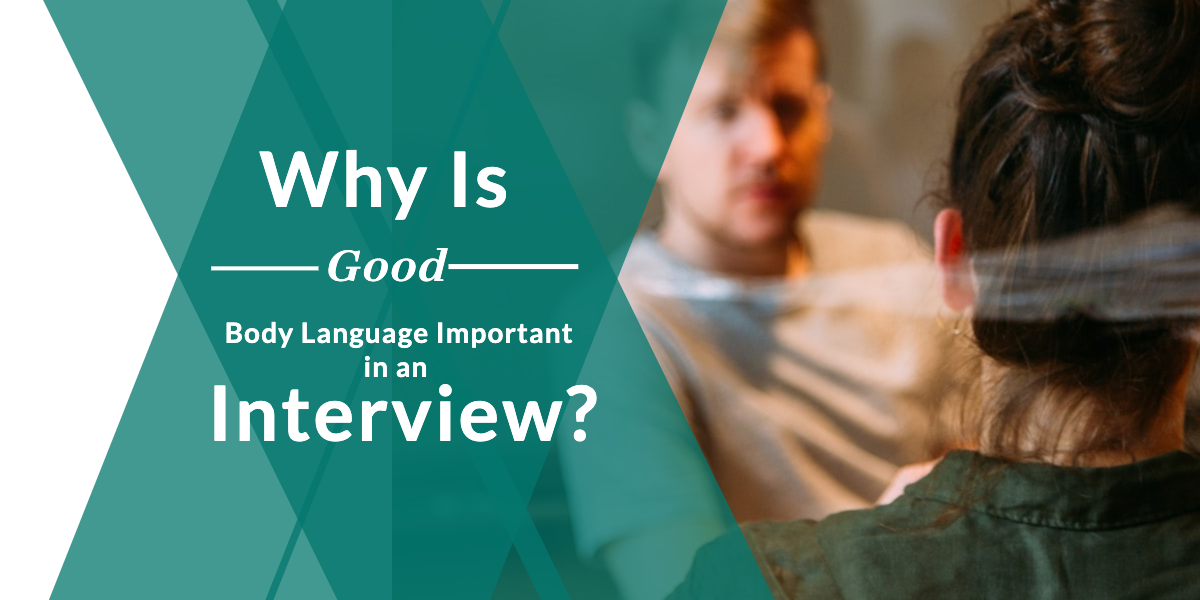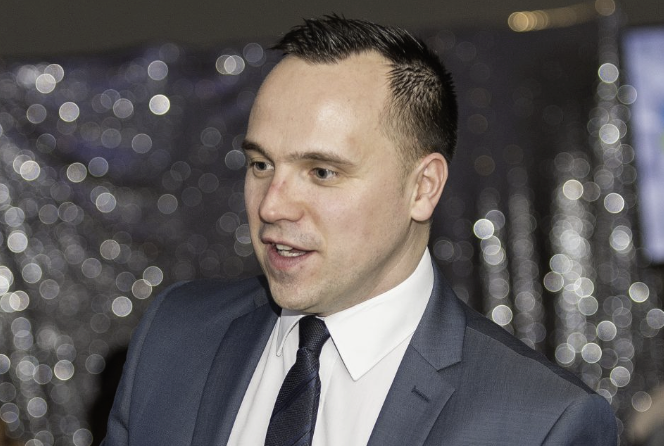The way that we communicate is through body language. It is a natural and subconscious way of communicating. The way that we move, the tone of our voice, our facial expressions, and the gestures that we make all form part of our body language.
This can be a good or bad thing depending on how we use it. When you are in an interview, it is important to have good body language because it can make or break your chances of getting the job.
In an interview, it is just as important to display good body language as it is to say the right things. This means maintaining eye contact, sitting up straight, and avoiding fidgeting. It is also important to keep your hands visible and to avoid crossing your arms, which can make you appear closed off.
But why is body language important in an interview?
Well, there are a number of reasons for this. One is that it shows you’re in good health, you’re displaying open and honest gestures and it shows you’re not a threat to anyone in the interview room.
Nonverbal cues are very important when setting a good first impression. But how do we do this? Here are seven ways to impress with your body language in the next interview.
Body Language Tips To Pass An Interview (Ultimate Guide)
Greeting The Interviewer.
When meeting someone for the first time and wanting to make a good impression, you should dress appropriately, have a good hair day, and use confident body language cues.
Once you have the basics of hygiene down it’s over to how you should approach a person.
When you greet someone for the first time, you should flash your eyebrows. Most people won’t pick up on this cue as it’s subconscious, but what this does is tell the other person you recognize them as friendly. To learn more about the eyebrow flash check out this article.
Should You or Shouldn’t You Handshake?
Next, is the handshake? Do you want one or don’t you? This is an important decision and should be led by the interviewer.
Let them take the lead with this decision, as you don’t want to offend them. With so much contact coming and going, most people have been reluctant to touch others, when with a handshake.
Opening Doors To Interview Rooms?
Ok, this is an odd one, but it does come under non-verbal communication. You want to come across polite and you were always taught to open the doors for others and the opposite sex, right? Well in this case, as with the handshake, let them lead the way.
If they open the door and allow you to walk in, say thank you and ask where you should sit.
Taking Your Seat.
It’s important to take off your coat or jacket (if you have one) and places it on the back of the chair or on a coat hook. This shows that you are confident and comfortable and aware of yourself. It also shows that you are ready and willing to stay for a while.
How you sit in your seat will be down to body posture. We will take a look at that next.
Understand Why Body Posture Is So Important.
When you think about your body posture and body language you don’t want to slouch in your chair you want to be as upright as you can using open body language gestures. Don’t cross your legs or arms. These are closed off body language gestures.
A really quick way to think about this is that contracting is negative and expanding is open.
Changing your body language to show you are paying attention can make a big difference. To do this, lean slightly forward in your seat when listening. You want to be drawn closer to the good thing by leaning forwards.
Head Tilt And Ear To The Side.
When it comes to the head tilt to express interest you want to move your head slightly to the side with your dominant ear showing.
This is a non-verbal cue to display interest in the other party. Remember that they don’t know you’re doing this, and if they do, it displays that you’re thinking about them in a more positive light so it’s a win-win.
Smile And Head Nodding.
Remember to smile and appear engaged in the conversation, even if you are feeling nervous. Nodding your head occasionally can also show that you are following along and interested in what the interviewer has to say.
Appear Relaxed And Ready.
Most people will feel nervous in an interview situation. It’s only natural and how you present yourself is very important. Nervous body language cues are, fidgeting in your chair, pulling at your clothes or rubbing your hands on your legs.
Tools To Combate Nervousness.
Instead, you want to seem relaxed and composed, and in control. There are a few tools and techniques we can use to help calm ourselves down.
- When you feel nervous in your body, name where the nervousness is within your body. Work through the idea and eventually the feeling will fade away.
- Squeeze your toes in your shoes. If you can’t name your whereabouts, then the next best thing is to squeeze your toes in your shoes. This does one of two things: first, no one can see you do this, second, it helps focus your mind on a different part of your body and takes the energy away from the feeling.
- Learn diaphragmatic breathing techniques. Diaphragmatic breathing is a type of breathing in which the diaphragm is the primary muscle used to breathe. The diaphragm has a dome shape, when it contracts it flattens out and moves downward, this creates an opening for air to go into your lungs through the nostrils. This type of breathing helps people relax and control their emotions because you are taking in more oxygen and releasing less carbon dioxide.
Hand Gestures And How To Use Them.
Keep your hand gestures steady and only to illustrate a point. A simple rule of thumb here is palm up indicates honestly. To emphasize a point, make sure you do it in a constant way and not randomly or out of time with your words.
For example, if you have three points to get across, you can raise your hand in an open palm to illustrate the point some people tapt the table. Think of it as a full stop at the end of a sentence.
Steepling is a gesture in which the person folds their fingers together and rests the tips of their index fingers on their chin. This gesture can be used as a means of communicating confidence in oneself or one’s thoughts.
Steepling is also a sign that you’re in control, but it can come across as being dominant depending on how high your steeple. If you have to steeple with your hands, keep it down with your thumbs pointing towards you around your stomach level.
Rubbing your hands together. When we rub our hands together, it may be a sign that we are trying to create a solution or come up with an idea. It could also mean that you feel helpless and don’t know how to deal with the situation. Best avoid this one.
For a more in-depth look at the hands and their non-verbal cues, check out this article on body language of the hands.
Mirror and match nonverbally and verbally.
Mirroring and matching is very powerful, but it needs to be done sparingly.
If you have never done this type of rapport building before, we recommend only mirroring a few positive gestures.
Most people will do this automatically as they communicate nonverbally and verbally. If you notice the interviewer repeating a positive word or two, drop them into the conversation. People like people who are like themselves.
Eye Contact And How Long Should You Do It?
How much eye contact is correct in an interview and where should you look?
Eye contact is an indicator of interest, attentiveness and sincerity. It can also be interpreted as a form of dominance or aggression.
The amount of eye contact varies from culture to culture but in the United States, it is generally considered appropriate to look at people for about three seconds when you are speaking with them or answering their questions.
We also recommend that you look at the person who is speaking and asking the questions. If there are multiple people in the room, make sure you look at each person to build rapport with everyone who is interviewing you.
Questions And Answers
1. What are some good body language tips for an interview?
In an interview, it is always important to make a good first impression. This means being confident, making eye contact, and having a firm handshake. It is also important to be aware of your body language. This means not crossing your arms, fidgeting, or playing with your hair.
2. What are some common body language mistakes that people make during an interview?
Some common body language mistakes that people make during an interview include slouching, not making eye contact, and fidgeting.
3. How can you use body language to project confidence during an interview?
Your body language can project confidence during an interview by maintaining good eye contact, sitting up straight, and avoiding fidgeting. You can also project confidence by speaking clearly and concisely in response to questions.
4. What are some tips for reading and understanding body language during an interview?
Some tips for reading and understanding body language during an interview are to look for cues such as eye contact, facial expressions, and body posture. It is also important to be aware of the context of the situation and to listen to the tone of the person’s voice.
5. How can you use body language to create a positive and professional impression during an interview?
Good posture, eye contact, and a firm handshake are all-important body language cues to give off a positive and professional impression during an interview. Additionally, smiling and maintaining an open body position can make you appear more approachable and likeable.
It is important to be aware of your own body language and be conscious of how it might be interpreted by others.
Remember to:
- Sit up straight.
- Look the interviewer in the eye.
- Nod your head to show you’re listening.
- Smile.
- Don’t fidget or play with your hands.
Summary
Why is good body language important in an interview? By paying attention to your body language, you can make a great first impression on potential employers and set yourself up for success. Remember to keep your posture open and upright, make eye contact, and avoid fidgeting. And, most importantly, smile! If you enjoyed reading this article, check out more relevant body language tips here.

